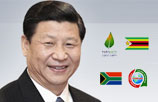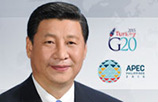8 million worldwide receiving HIV treatment
(Xinhua) Updated: 2012-07-19 06:47WASHINGTON - Over eight million people worldwide had access to life-saving treatment in low- and middle- income countries last year - an increase of 1.4 million over 2010, the Joint United Nations Program on HIV/AIDS (UNAIDS) said Wednesday in a new report released in Washington, DC.
The report - Together We Will End AIDS - says despite the substantial numbers of people newly starting treatment, it is only just over half (54 percent) of the 14.8 million people eligible.
According to the report, some 34.2 million people are living with the AIDS virus globally, including 2.5 million who became infected last year. And 1.7 million died in 2011. New infections and deaths dropped slightly last year.
The report also outlines the significant progress that has been made in reducing new HIV infections in children. Since 2009, new infections in children have fallen by an estimated 24 percent. Some 330,000 children were newly infected in 2011, almost half than at the peak of the epidemic in 2003 (570,000).
The report says domestic funding for HIV has exceeded international investments. Low- and middle- income countries invested $8.6 billion for the response in 2011, an increase of 11 percent over 2010. International funding however remained flat at 2008 levels (8.2 billion dollars).
The report points to a 7.2 billion dollars funding gap, which it says the world must address by 2015 to treat everyone in need and to offer effective prevention interventions more widely.
"This is an era of global solidarity and mutual accountability, " said Michel Sidibe, executive director of UNAIDS. "Countries most affected by the epidemic are taking ownership and demonstrating leadership in responding to HIV. However, it is not enough for international assistance to remain stable - it has to increase if we are to meet the 2015 goals."






